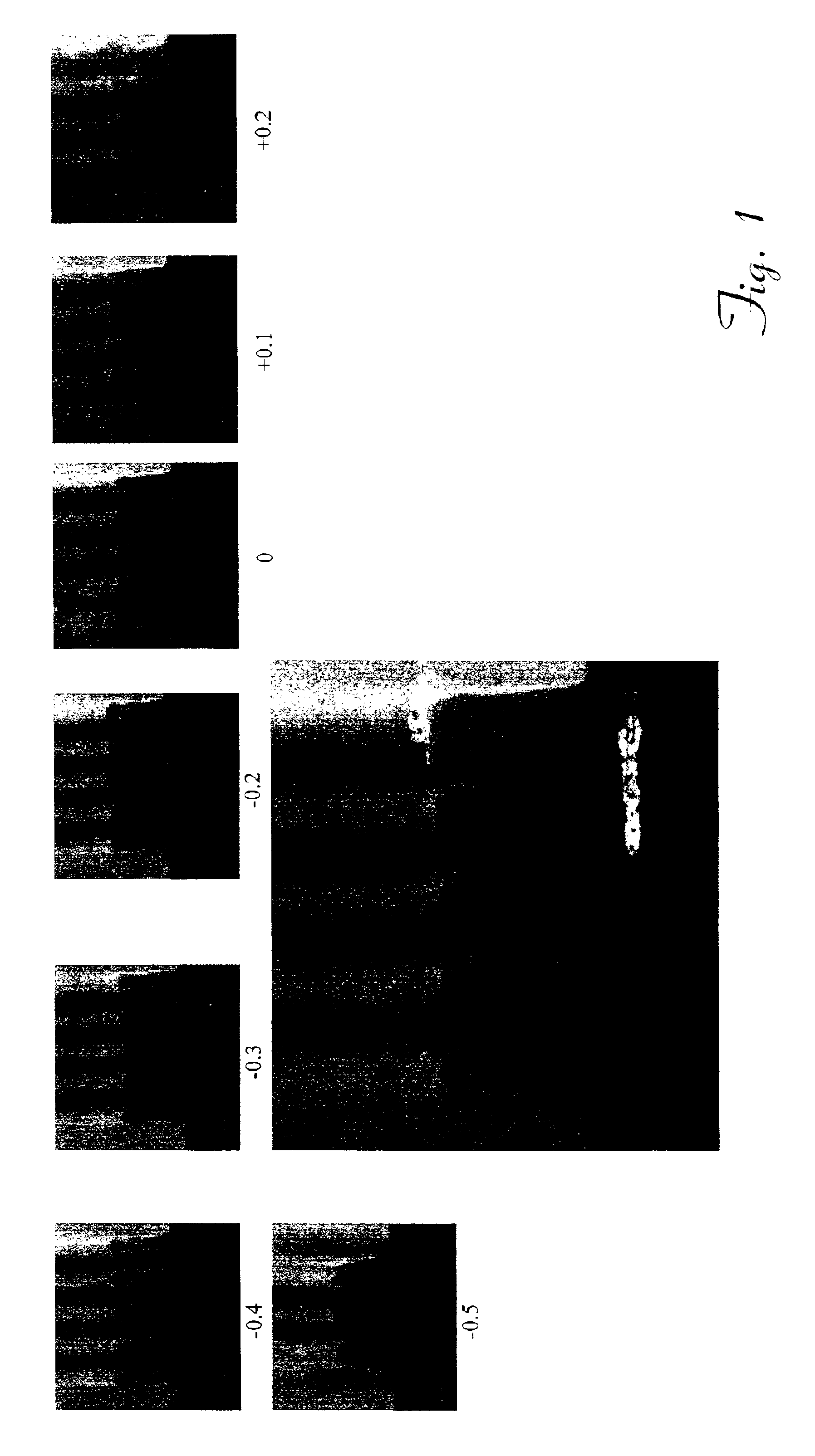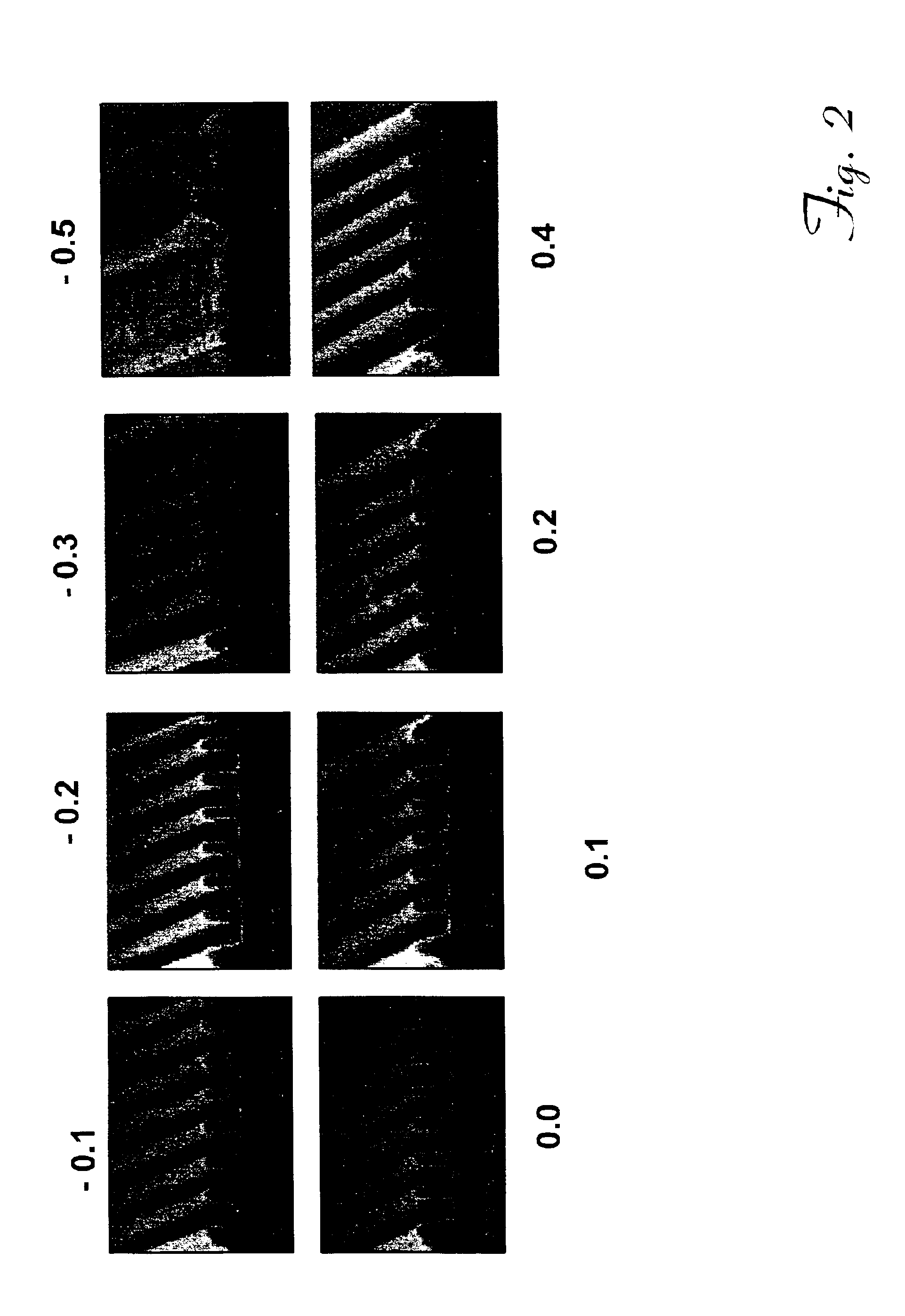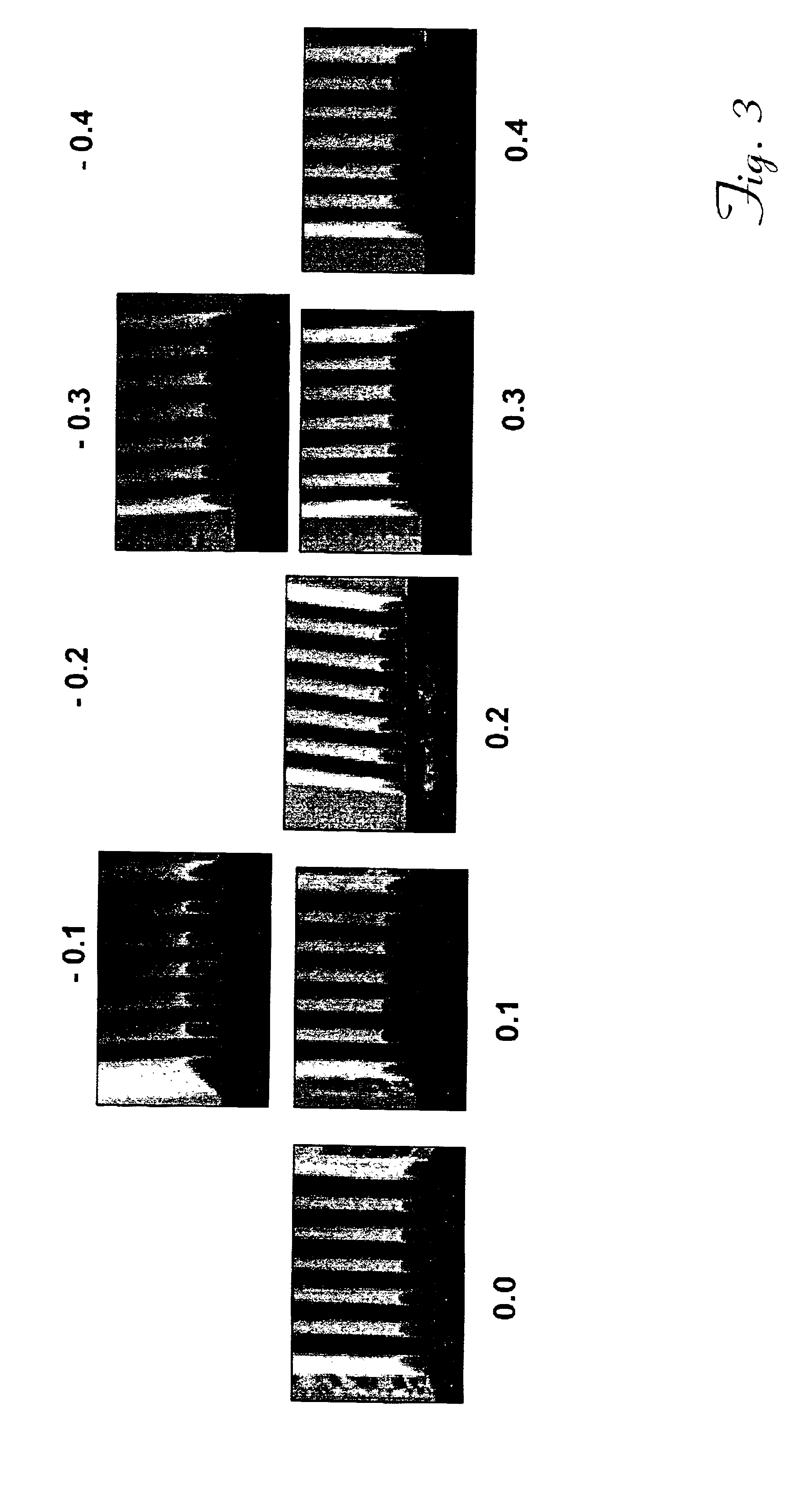Organic anti-reflective coating compositions for advanced microlithography
a technology of anti-reflective coating and microlithography, which is applied in the direction of photosensitive materials, instruments, photomechanical equipment, etc., can solve the problems of reducing the image quality of the processed photoresist, and reducing the resolution of the photoresis
- Summary
- Abstract
- Description
- Claims
- Application Information
AI Technical Summary
Benefits of technology
Problems solved by technology
Method used
Image
Examples
example 1
1. Anti-reflective Coating without Crosslinking Agent
An epoxy cresol novolac resin (ECN 1299, available from Dow Chemical Company) was dissolved in a 75:25 solvent solution of ethyl lactate:PGMEA to obtain reaction mixture having a solids content of approximately 20% by weight. Equimolar amounts of trimellitic anhydride (obtained from Aldrich Chemical Company) were added to the reaction mixture. Benzyl triethyl ammonium chloride (BTEAC) was added to the mixture (2% by weight, based upon the weight of epoxy cresol novolac resin), and the reaction mixture was heated to 120° C. in an oil bath under a nitrogen atmosphere for two hours. The reaction mixture was then cooled and formulated into an anti-reflective coating (at a solids content of approximately 5% by weight) by the addition of p-toluenesulfonic acid (p-TSA) as the catalyst for crosslinking at a temperature of 205° C. Tables 1 and 2 set forth the respective formulations of the mother liquor and anti-reflective coating composit...
example 2
1. Anti-reflective Coating with a Trivinylether Crosslinking Agent
An epoxy cresol novolac resin (ECN 1299) was dissolved in a 75:25 solvent solution of ethyl lactate:PGMEA to obtain a reaction mixture having a solids content of approximately 20% by weight. Equimolar amounts of 4-hydroxybenzoic acid were added to the reaction mixture. BTEAC was added to the mixture (2% by weight, based upon the weight of epoxy cresol novolac resin), and the reaction mixture was heated to 120° C. in an oil bath under a nitrogen atmosphere for twenty-four hours. The reaction mixture was cooled and formulated into an anti-reflective coating (at a solids content of approximately 5% by weight) by the addition of trimethylolpropane trivinylether (crosslinking agent, obtained from Aldrich Chemical Company) and p-TSA as the catalyst for crosslinking at a temperature of 205° C. Tables 5 and 6 set forth the respective formulations of the mother liquor and anti-reflective coating compositions.
TABLE 5Mother Liqu...
PUM
| Property | Measurement | Unit |
|---|---|---|
| molecular weight | aaaaa | aaaaa |
| temperature | aaaaa | aaaaa |
| composition | aaaaa | aaaaa |
Abstract
Description
Claims
Application Information
 Login to View More
Login to View More - R&D
- Intellectual Property
- Life Sciences
- Materials
- Tech Scout
- Unparalleled Data Quality
- Higher Quality Content
- 60% Fewer Hallucinations
Browse by: Latest US Patents, China's latest patents, Technical Efficacy Thesaurus, Application Domain, Technology Topic, Popular Technical Reports.
© 2025 PatSnap. All rights reserved.Legal|Privacy policy|Modern Slavery Act Transparency Statement|Sitemap|About US| Contact US: help@patsnap.com



